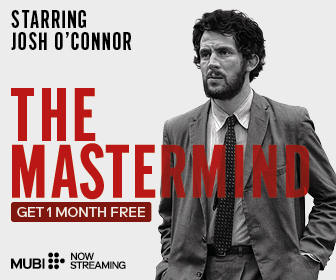Uta Briesewitz’s American Sweatshop plunges into one of the most psychologically harrowing workplaces imaginable—the content moderation industry. Instead of conventional horror tricks, the film unsettles us by exposing the corrosive mental toll of staring into the internet’s darkest corners day after day. At its core, American Sweatshop follows Daisy’s relentless crusade for justice as she tries to confront and contain the evil she cannot simply erase. Her journey plays out on two levels: a literal battle against the unfiltered chaos of online nudity and violence, and a metaphorical struggle against her own spiraling obsession and descent into brutality.
Spoilers Ahead
American Sweatshop (2025) Plot Summary and Movie Synopsis
Daisy’s daily world is all about balance. On the surface, Daisy keeps her routines and relationships, but the images she moderates do not go away easily. Everything changes when she sees a video of a woman being tortured with a nail. The moment she sees that video, it is so dark that it will never leave her thinking.
She alerts her superiors and the police, but both say it is not a concern. Daisy, feeling trapped and desperate, posts the video to a forum, hoping to find the video’s subject. A commenter gives her an address in Ripley, Georgia, and she drives herself for four hours. She stalks the guy, follows him, and confronts him at the movies—only to realize she has made a mistake. The commenter had manipulated the situation and Daisy for their own amusement, and now has proven that the cruelty of the internet goes well beyond the workplace.
Back in Tallahassee, Daisy seeks help from her colleague Paul (Jeremy Ang Jones), who refuses, warning her against obsession. But Daisy’s drive only intensifies. She contacts Klipspringer Films, the creator of the video, and claims she wants to appear in their next production. Her erratic behavior escalates. At a bar, she assaults the bartender with a belt, showing that the trauma she absorbs online is spilling into her real-world actions. When Klipspringer responds, Daisy heads to their filming location, abandoning her neighbor’s child in the process. On set, she identifies one of the perpetrators by his shoes, pepper-sprays him, and destroys the camera equipment before fleeing.
Why Does Daisy Take Such Extreme Measures?
Daisy’s actions are driven by a need to reclaim agency in a world that continuously exposes her to moral horror. The nail video is not just another clip to moderate; it represents the limits of her power and the inadequacy of conventional justice. Her obsession is both a coping mechanism and a misguided attempt to confront the evil she cannot erase. The film asks the viewer to consider: what happens when witnessing human cruelty becomes unavoidable? Daisy’s escalating violence is a direct response to the psychological harm inflicted by her job and the internet’s indifference.
What Role Does Paul Play?
Paul functions as both a foil and a moral compass in “American Sweatshop.” While Daisy spirals deeper into obsession and trauma, Paul represents restraint, empathy, and the human need for boundaries. He is completely cognizant of the emotional and psychological risks associated with content moderation. He has, for his own entertainment’s sake, seen disturbing footage of animal torture, which causes him to stop, think, and ground himself with mini acts of care, such as hugging his dog. Paul demonstrates that trauma does not need to be internalized in order to act in harmful ways, showing a deeper understanding of trauma than Daisy’s impulsive actions.
Paul’s hesitation to help Daisy track down the wrong guy signals to the audience his concerns about the slippery slope she is on — the danger of obsession and seeking digital justice that seems likely to become physical violence. Still, Paul does not relinquish Daisy altogether. When he eventually provides Daisy with the information that she seeks, the true individual responsible for the terrible video, he does so with ambiguity and a blend of compassion and caution.
Finally, Paul’s existence illustrates one of the topics that will recur multiple times in the film: the moral and emotional burden of digital labor. He serves as a reminder to the viewer that moderation is not just about removing inappropriate content. It extends to human lives, human psychology, and human ethics. While Daisy’s actions escalate into physical and psychological extremes, Paul models a way to navigate trauma responsibly, making him a subtle but essential anchor in a narrative dominated by chaos and moral ambiguity.
American Sweatshop (2025) Ending Explained: Is Daisy Free from Her Trauma?
The ending makes it clear that Daisy is not free in the traditional sense. She escapes the immediate pressures of content moderation and completes her nursing exams, but her trauma persists. The man who tormented her online is now in her grasp, and Daisy’s final expression suggests that she intends to take action on her own terms.
“American Sweatshop” doesn’t provide a comforting resolution. Instead, it asks: what price do we pay when justice is unattainable, and what happens when the observer becomes the actor? Daisy’s journey exposes the impossible tension between moral responsibility, personal trauma, and the boundless cruelty of the digital age. The film’s final shot, in which Daisy smiles at the camera while the perpetrator watches, cements the unsettling truth. Sometimes, surviving a sweatshop of horrors means becoming something darker than the world you sought to confront.
How Does ‘American Sweatshop’ End?
The ending is eerie but unclear. After damaging the Klipspringer set, Daisy tries to restart a routine: she studies for nursing exams, volunteers at a soup kitchen, and tries to think about a real-world future. But the trauma remains there. While being with her boyfriend, she is triggered by the nail from the original video, suggesting that certain psychological wounds cannot just be erased.
In the last scene, Daisy is successful in her final exams and is called to a nursing interview to find that the interviewer is the same man from the video. Her real purpose was not to be a nurse; it was to confront the person who tormented her. Daisy’s subtle smile to the camera signifies a horrific conclusion. She has accomplished her goal of justice, but it has turned her into someone more dangerous than the man who previously tormented her.
The concluding scene leaves the audience confused about what is morally right in an age of pervasive digital cruelty in the form of video, photos, and text. The film envisions a world where confronting evil becomes necessary when institutions fail, and where personal injustice can drive someone into morally gray—or even perilous—territory.
How Does the Film Portray the Internet’s Psychological Toll?
“American Sweatshop” portrays the internet not as a neutral tool but as an omnipresent, corrosive force capable of infiltrating every corner of human life. The film presents content moderation as a high-stakes psychological battlefield, where workers like Daisy are exposed to endless streams of violence, sexual abuse, and human cruelty. The film explores Daisy’s mental decline over time as a result of this exposure, emphasizing that it is not simply unpleasant; it is cumulatively traumatic. Each video leaves a physical trace, layering stress, anxiety, and intrusive thoughts that she cannot escape, even in personal or intimate places.
The internet in “American Sweatshop” behaves similarly to a character itself: powerful, cold, and perpetually cruel. The design of the internet is to essentially make content irretrievable once uploaded. This is illustrated when Daisy deletes the original video of torture, only to find out it is hosted on multiple sites. The film suggests that the infinite nature of the digital world compounds psychological stress and that moderation is a contemporary form of slavery, hence the title “American Sweatshop.” Furthermore, it illustrates the way the internet manipulates perception and morality.
Through Daisy’s obsessive imagined pursuit, the film illustrates a chilling loop: exposure to violence online leads to obsession, compulsion, and, eventually, real violence. By anchoring us in Daisy’s perspective, the film forces the viewer into a visceral encounter with the exhausting mental labor of moderating the internet.



![No Bears [2022]: ‘IFFK’ Review – Jafar Panahi’s self-referential, introspective autofiction on artistic freedom condemns Iran’s repressive regime](https://79468c92.delivery.rocketcdn.me/wp-content/uploads/2022/12/No-Bears-2022-Movie-Review-768x432.jpg)





Shovan, you missed something in the final frame that adds even more ambiguity to Daisy’s state of mind at the end of the film. Take another peek, specifically in the doorway behind her as she smiles at the camera.